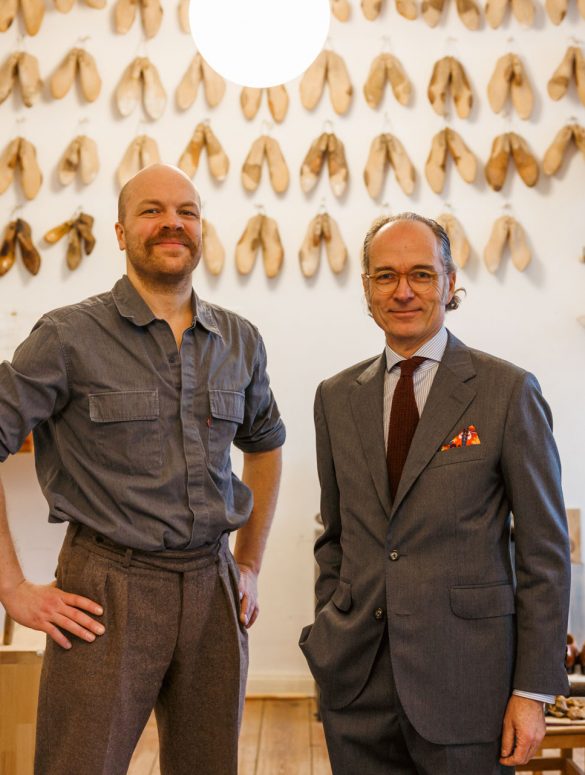The Berlin-based bespoke shoemaker has been offering a small collection of hand-welted ready-to-wear shoes for some time now. Now you can also get a wooden shoe care box from him, equipped with cloth, brushes and care products. You can choose the latter to suit your own needs. The premiere of the box was the occasion for a discussion about shoe care, during which Korbinian Ludwig Heß gave practical advice.

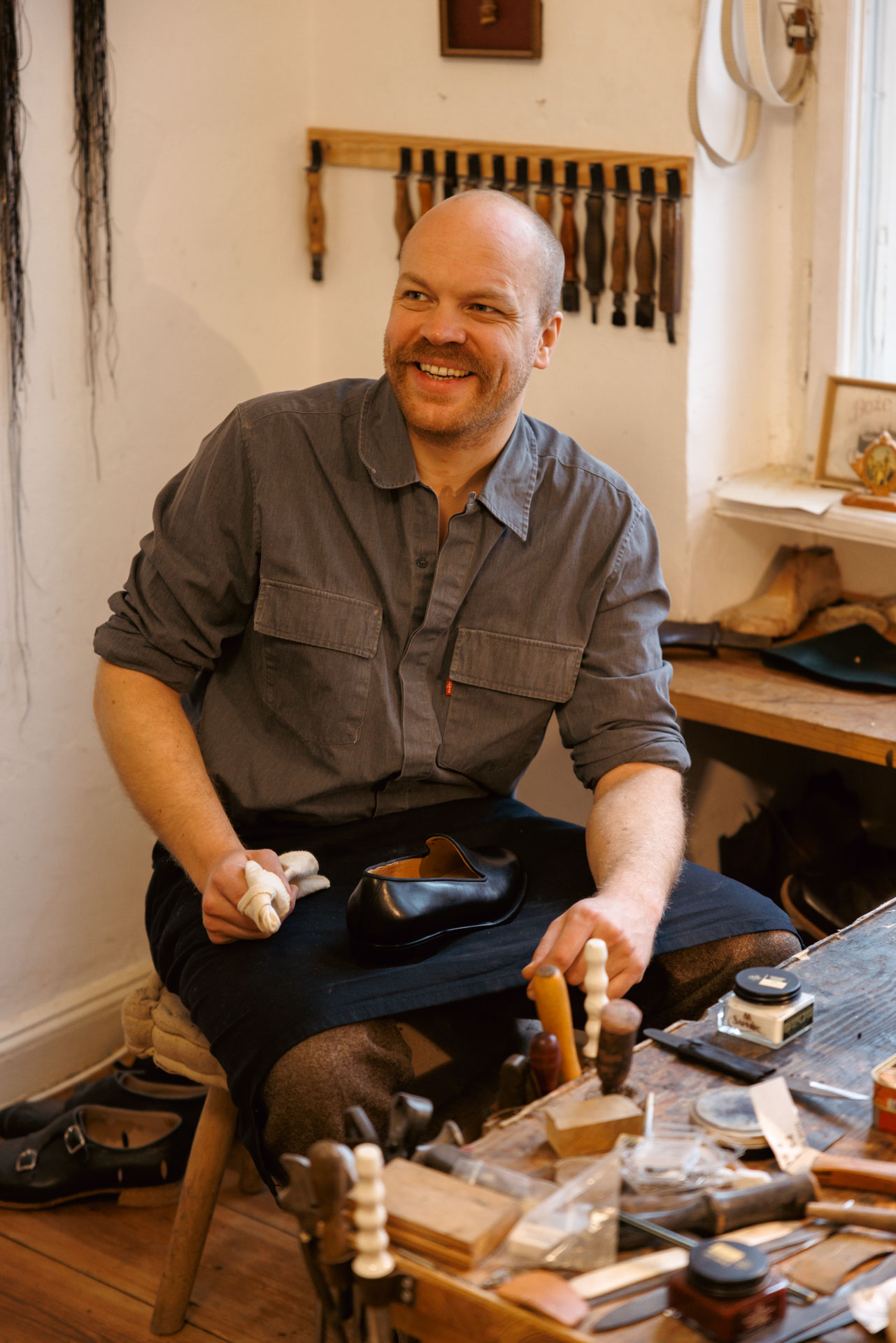
Bernhard Roetzel: Let’s start with the care products. What do you have to look out for?
Korbinian Ludwig Heß: It is very important, no matter which care product you use, that you use very little. Always economical. Some people want to winterize their shoes by putting a lot of grease on them, but that backfires. The leather will then eventually become brittle and lose its shape. Always use shoe polish slowly, carefully and sparingly.
And what kind of care products do you recommend?
When it comes to shoe care, everyone has their own thing. There is no right or wrong. I prefer to work with Saphir products, which we also use in our shoe care box. You can choose your jars and tins as you wish. The box is an offer, everyone does something different with it.
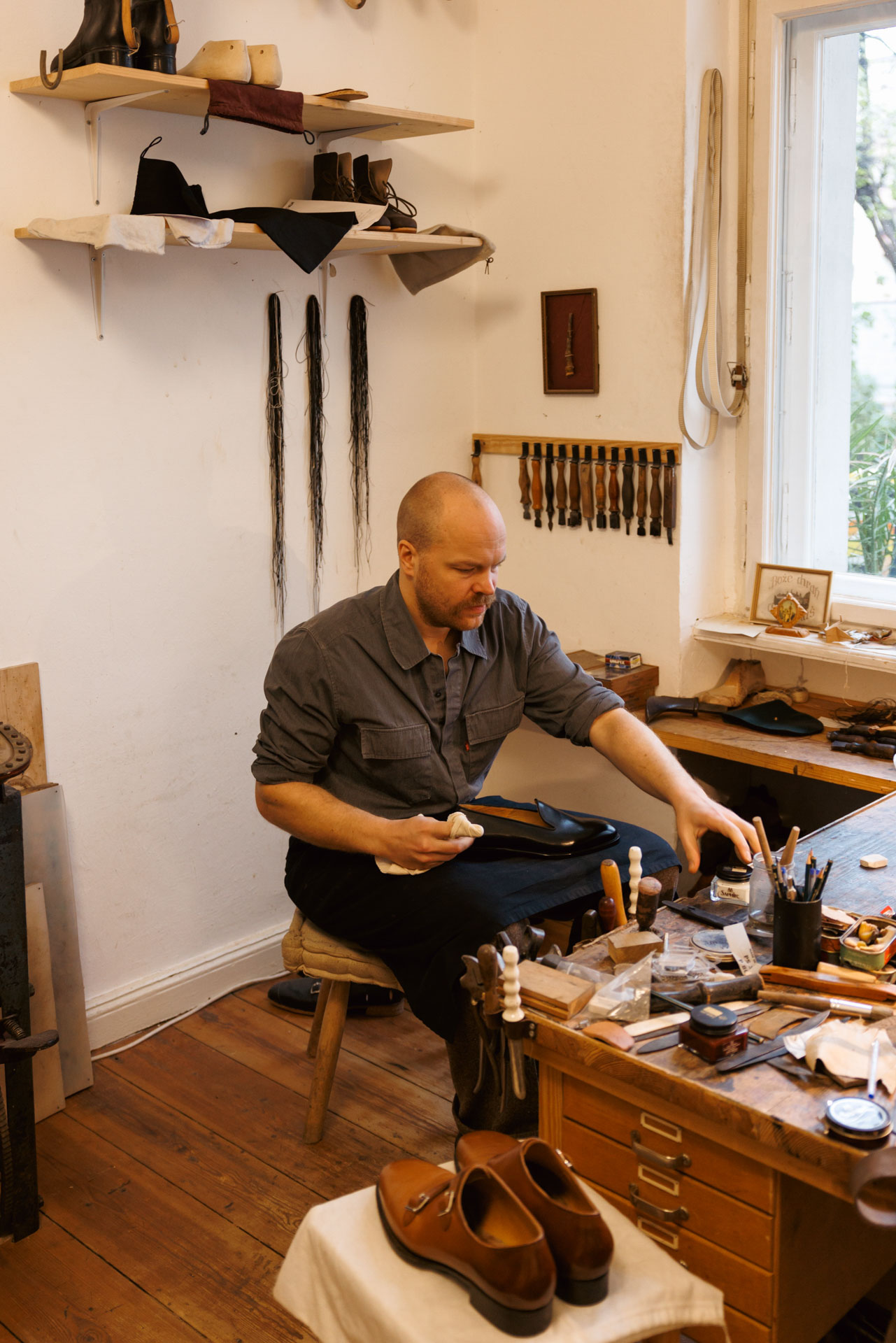

What can we find in this box?
Cream and the paste with the wax content. We first use our cream, which contains a lot of color pigments, refreshes the color and nourishes the leather. Then the paste with the wax content. This protects the shoe and is the only way to achieve a high gloss. The wax covers the leather like a layer of icing, making it harder for water to penetrate.
What can you say about the color of the creams or pastes? You can change the color of brown shoes.
I never care for my shoes with cream in the same color as the shoes. I prefer to give a brown shoe a red tint or I use blue cream for black leather. This gives the shoe a slight shade and later a patina.
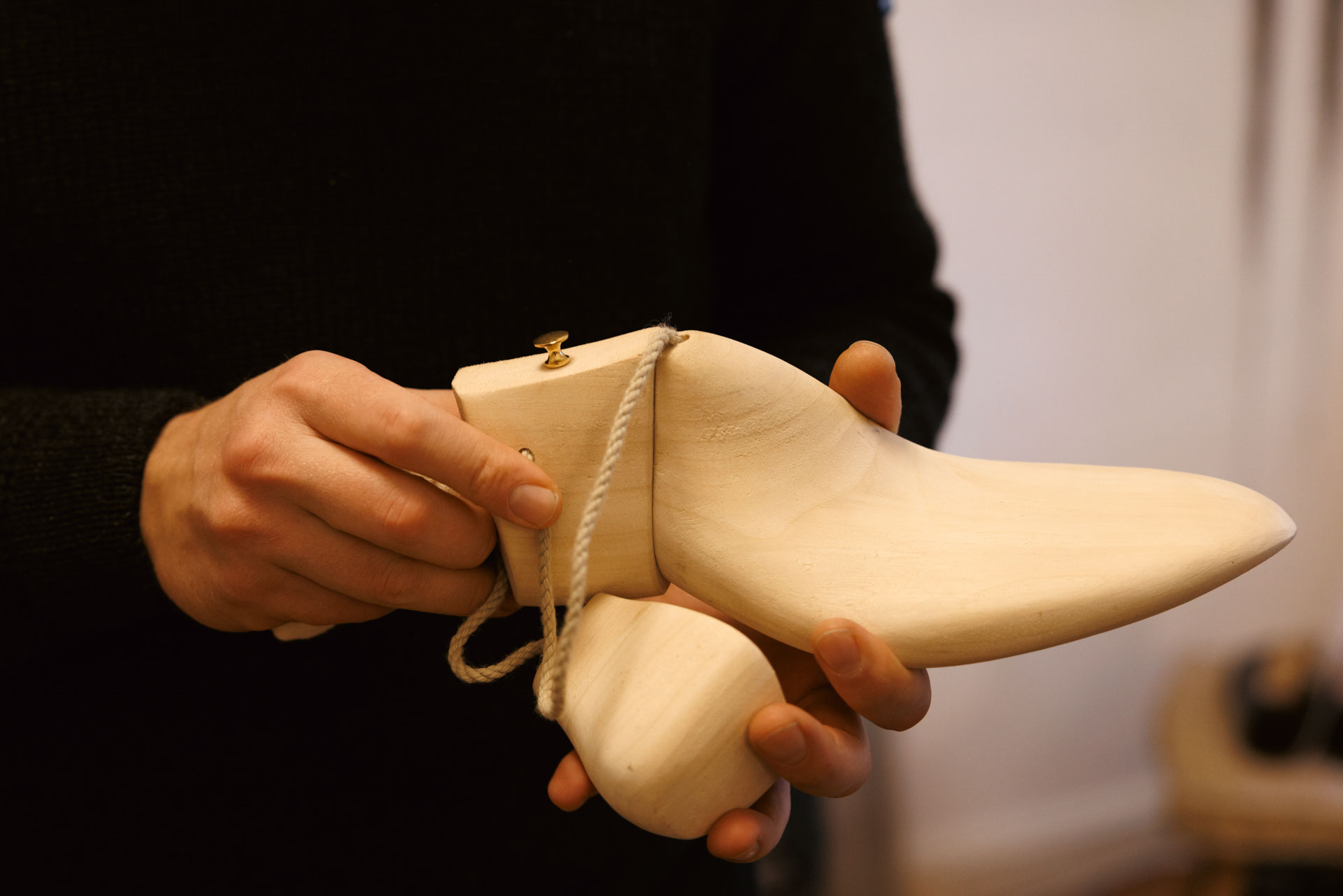

What is there to say about the brushes?
If you use a brush on a shoe to which you have applied wax, then you should only use it for this. A little bit of wax always sticks if you then use it on nubuck or other suede leather. However, I hardly ever use brushes, I always work with the cloth. Except for cleaning, where I sometimes use the brush. And for the areas between the shaft and welt or for the seams. It takes a bit of practice until you get the shine with the cloth and there are no streaks. But with a large polishing brush you can only achieve a high gloss halfway. If you want extreme shine, then we have “Mirror Gloss” from Saphir in stock. But this is really for advanced users.
This somewhat hard brush in the box could also be used as a dirt brush, right?
Yes, you can use it to remove dust, sand or grass. I also use it to brush out the cuffs of my pants. Afterwards I would use a wet cloth. You can also use a kitchen sponge. But not the scratchy side that you use to clean the pots. Simply wipe off the dirt as you would from a table top. Allow to dry afterwards, this is important. Never on the heating. Always at room temperature. And then cream and paste as just described.
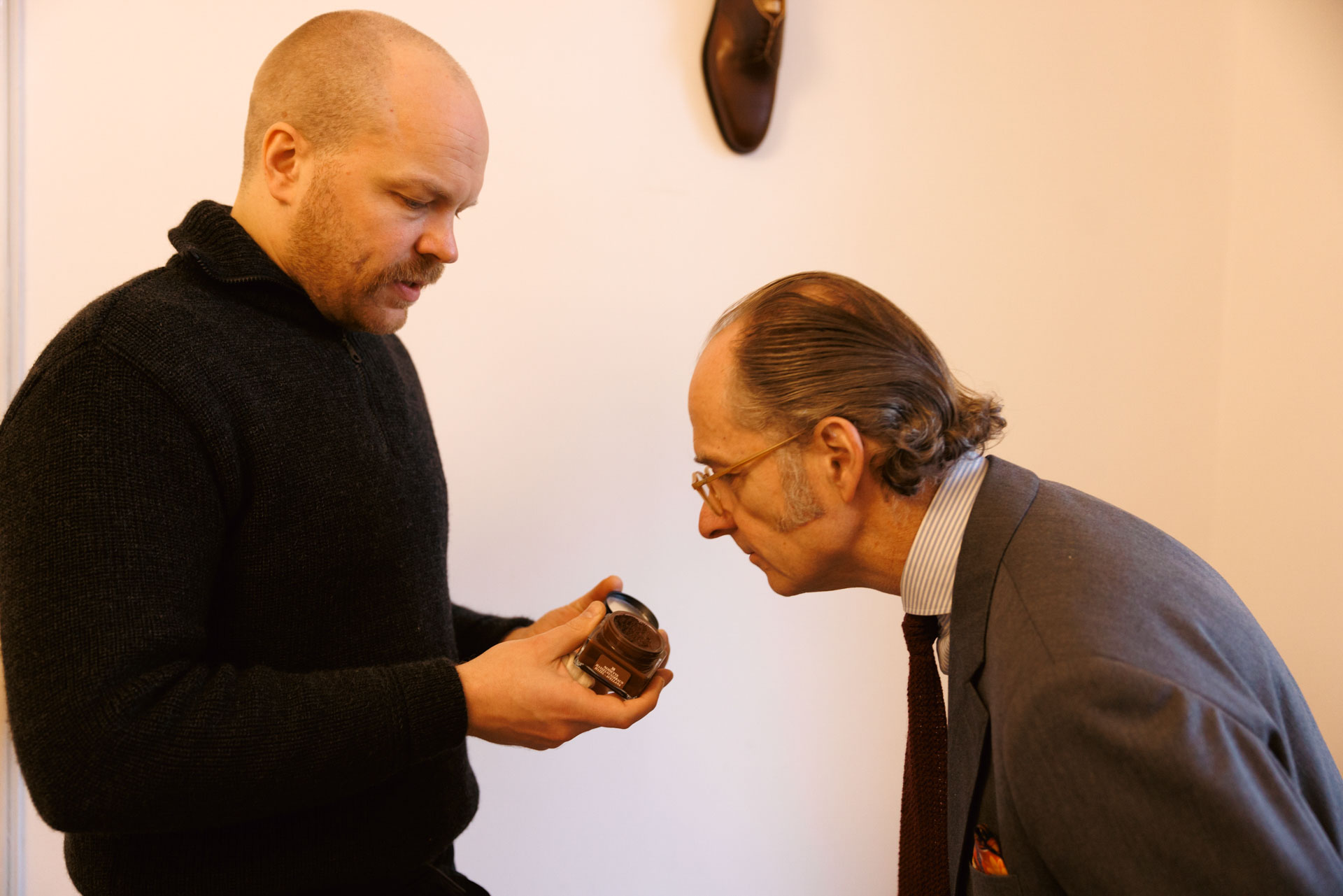
What do you think of care products for the sole?
I wouldn’t do anything at all with a leather sole. Oiling a leather sole – for me, that’s one of those things to be able to sell the next product. That makes no sense to me. If the leather sole is wet, lay the shoe on its side so that it can breathe. Put the shoe trees in and you’re done.
Shoe tree is a good keyword…
You can look after your shoes however you like, but if you don’t have the right shoe trees, nothing will happen. The shoe will break at some point.
In our book “Handgemachte Herrenschuhe” you recommended newspaper as a substitute.
Newspaper is actually the best. Some people even use them to make shoe trees. They stick newspaper into the front of the shoe at the back of the heel cap and then insert a stick or spoon in between for tension. You can do anything. But newspaper is really great because firstly it absorbs moisture and secondly you can control exactly where you press it. You can even get creases out of the leather this way. That’s why newspaper is better than a shoe tree that doesn’t fit properly.

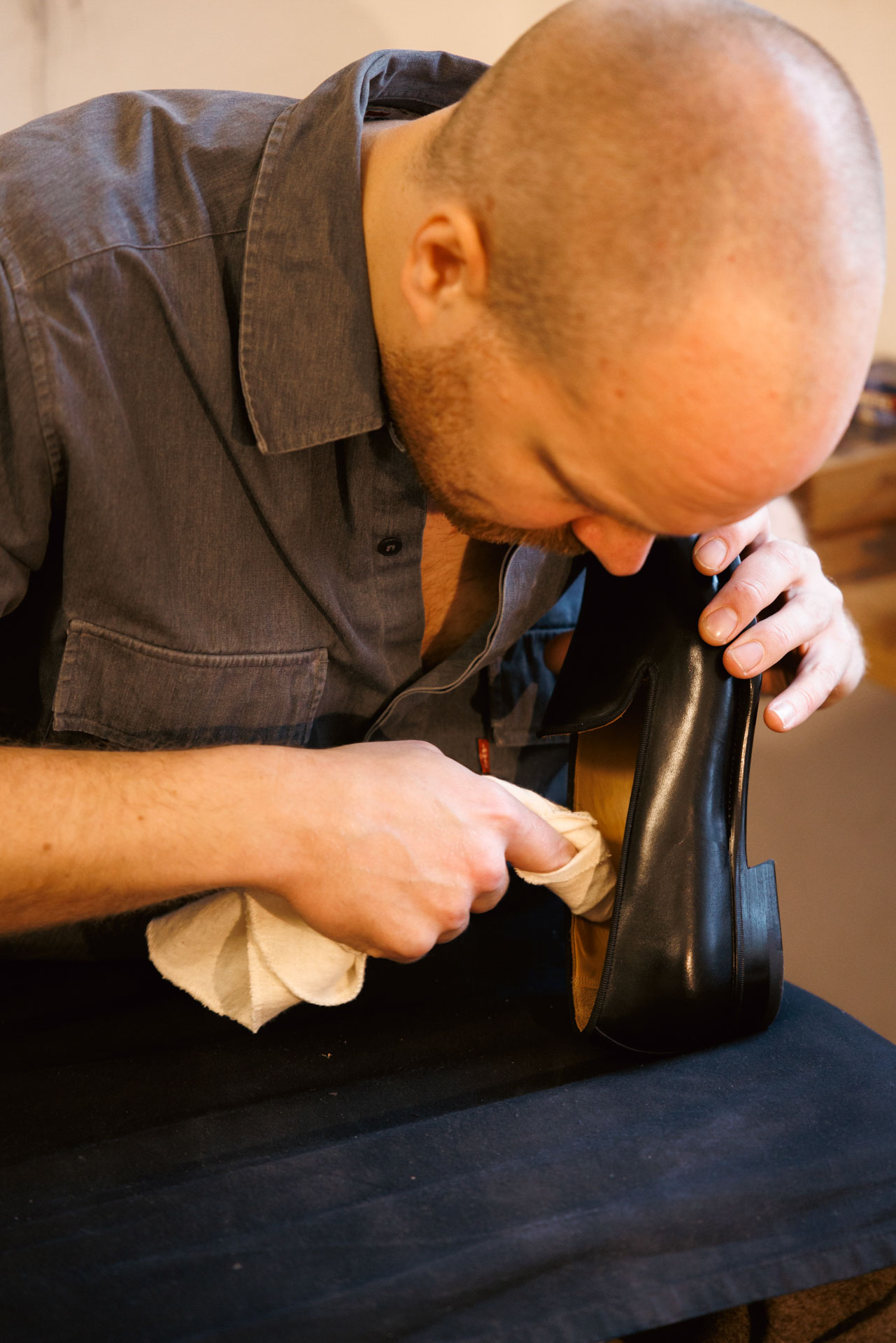
How tight should shoe trees be?
Just look at the shoe from the side. It must not be overstretched, the toe must not bend down any further than it did at the beginning when the shoe was new. The classic mistake that is made with tighteners that are not made to measure can be seen at the heel. The heel of the shoe is then pushed back by the tensioner so that it is very narrow and protrudes beyond the heel. Then, at some point, the toe cap will break because the fabric is not made of leather. That’s why I prefer newspapers.
The tensioners for your made-to-measure shoes naturally fit perfectly. How is the tension regulated?
We do not use tensioners with joints because they wear out the lining and the seams of the heel. No matter how smooth the wood has been polished. We have three-part tensioners that consist of a block for the heel, the front part and a part for the middle. If you take this out, you can remove the other two parts without any friction.
Should you put the tensioner in the shoe while it is still warm from being worn?
Yes. You can imagine it like this: If you wear the shoe all day, it gets damp and warm, which causes the leather to expand a little. When you take the shoe off, it contracts again. This can cause the leather to contract in the wrong direction in some places, i.e. into a crease. This is why you should always place the shoe tree in the damp and warm shoe so that the leather can contract into its original shape. And as I said: never put it on the heater. Take care when driving with a fan. If you have been for a walk in the woods and have really wet shoes, it is not good if the hot air dries out the leather while you are driving.
How do you care for suede?
Difficult topic. There’s not much you can do. Of course, it depends on what kind of suede it is. You can do a lot with oiled nubuck, like this cowboy boot. With a suede leather like this loafer, however, it is problematic. In other words, a leather where the side of the hide facing inwards is used. You just impregnate it. And immediately before you touch it much. And then just make a little effort to ensure that nothing happens. Wetness is not the problem, grease is. I wouldn’t cook with shoes like these, if olive oil gets on them, it’s not so good. You can try talcum powder, which can absorb the grease a little, then brush it off. However, this is only done on light-colored suede. For dust and dirt, you can use a brush like the one in our box. Provided there is no wax from a paste on it.
Edges of snow?
First of all, I wouldn’t go out in the snow with suede shoes. If it does happen, only work with distilled water. Normal water creates new edges again due to the lime and minerals that are in it. So rinse with distilled water, you can also add a dash of lemon juice. That bleaches a little.
So when planning your shoe wardrobe and when buying or ordering, think about the use of the shoe.
Yes, I also sometimes warn customers if they choose an unsuitable leather.
What is your advice for Cordovan?
Saphir has an extra cream for horse leather. But always dose carefully here too. If you need it, you can order it for the Shoebox. You can then also use the “Mirror Gloss” on the special care for Cordovan, that’s no problem. Cordovan already has such a beautiful shine when rubbed properly.
Any last tips?
The lining leather. After a certain time, it should also be maintained. The lining leather is actually subjected to more wear than the upper leather. The sweat gets on it, then it dries again. And the change from warm to cold. If you notice that the leather has dried out, you can treat it with a product that we recommend specifically for this purpose. It contains macadamia oil, which also smells very good.
Thank you very much.
